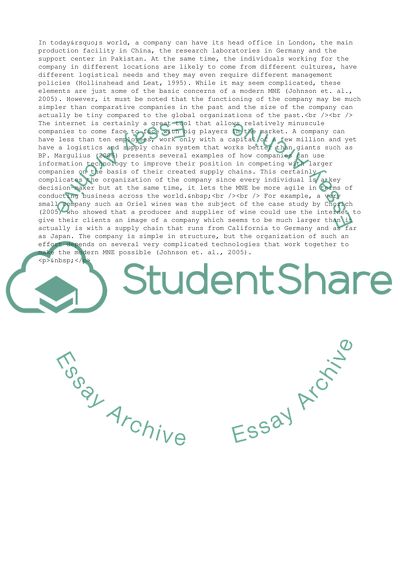Cite this document
(Business Strategy: The Modern MNE Assignment Example | Topics and Well Written Essays - 2000 words, n.d.)
Business Strategy: The Modern MNE Assignment Example | Topics and Well Written Essays - 2000 words. Retrieved from https://studentshare.org/business/1538937-mba-business-startegy
Business Strategy: The Modern MNE Assignment Example | Topics and Well Written Essays - 2000 words. Retrieved from https://studentshare.org/business/1538937-mba-business-startegy
(Business Strategy: The Modern MNE Assignment Example | Topics and Well Written Essays - 2000 Words)
Business Strategy: The Modern MNE Assignment Example | Topics and Well Written Essays - 2000 Words. https://studentshare.org/business/1538937-mba-business-startegy.
Business Strategy: The Modern MNE Assignment Example | Topics and Well Written Essays - 2000 Words. https://studentshare.org/business/1538937-mba-business-startegy.
“Business Strategy: The Modern MNE Assignment Example | Topics and Well Written Essays - 2000 Words”. https://studentshare.org/business/1538937-mba-business-startegy.


